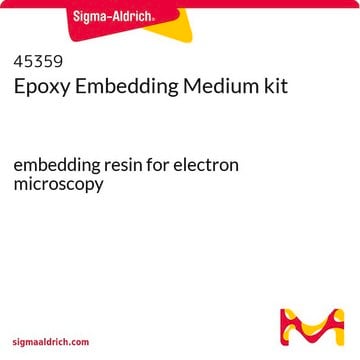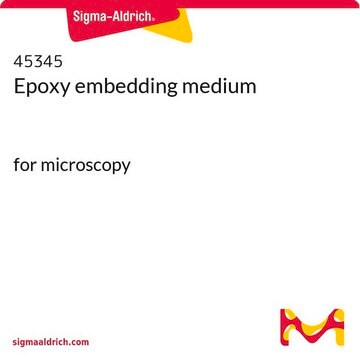75633
Osmium tetroxide solution
suitable for electron microscopy, 2% in H2O
Sinónimos:
Osmium(IV) oxide
About This Item
Productos recomendados
form
solution
reaction suitability
reagent type: oxidant
concentration
2% in H2O
technique(s)
electron microscopy: suitable
color
colorless to yellow
density
1.0 g/mL at 20 °C
1.0 g/mL at 20 °C
application(s)
hematology
histology
storage temp.
2-8°C
SMILES string
O=[Os](=O)(=O)=O
InChI
1S/4O.Os
InChI key
VUVGYHUDAICLFK-UHFFFAOYSA-N
¿Está buscando productos similares? Visita Guía de comparación de productos
General description
Application
Biochem/physiol Actions
signalword
Danger
Hazard Classifications
Acute Tox. 2 Dermal - Acute Tox. 4 Inhalation - Acute Tox. 4 Oral - Eye Dam. 1 - Skin Irrit. 2
Storage Class
6.1B - Non-combustible acute toxic Cat. 1 and 2 / very toxic hazardous materials
wgk_germany
WGK 1
flash_point_f
Not applicable
flash_point_c
Not applicable
ppe
Faceshields, Gloves, Goggles, type ABEK (EN14387) respirator filter
Certificados de análisis (COA)
Busque Certificados de análisis (COA) introduciendo el número de lote del producto. Los números de lote se encuentran en la etiqueta del producto después de las palabras «Lot» o «Batch»
¿Ya tiene este producto?
Encuentre la documentación para los productos que ha comprado recientemente en la Biblioteca de documentos.
Los clientes también vieron
Nuestro equipo de científicos tiene experiencia en todas las áreas de investigación: Ciencias de la vida, Ciencia de los materiales, Síntesis química, Cromatografía, Analítica y muchas otras.
Póngase en contacto con el Servicio técnico






